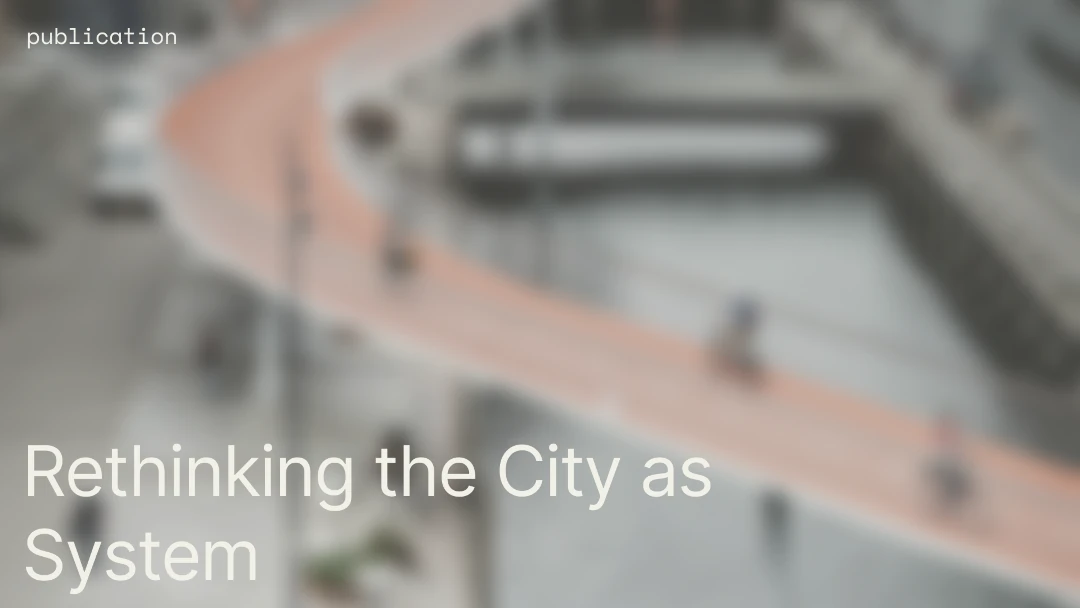
Bio
Christina Haupt Toft is the founder of Circle, a consultancy that unites construction and biodiversity for the benefit of businesses and society. With over 15 years of experience in finance and construction, she has dedicated the past five years to focusing on sustainability and biodiversity in the built environment. Among her achievements is the development of a national method for city nature mapping in extensive collaboration within the industry, including ConTech Lab.
She is a co-author of the inspiration catalogue 'Biodiversity in Construction and Urban Development,' which reviews rules and frameworks and provides inspiration for working with nature before, during, and after construction. Christina also led the biodiversity track in the Action Tank for Sustainability in the construction industry, where 80+ companies and organisations came together to make recommendations for actions.
Christina Haupt Toft holds an education in Circular Economy & Sustainability Strategies from the University of Cambridge and a board education in Sustainable Finance & ESG from Copenhagen Business School (CBS).
What drives you?
Throughout my career as a leader, corporate innovator, entrepreneur, and urbanist, I have always believed that the biggest business opportunities lie in solving problems. And one of the greatest challenges of our time is our impact and dependency on the resources of nature.
I am driven by the desire to create systemic changes through collaboration, technology, and digitalisation to find innovative, common and actionable solutions towards a sustainable future.
One of the initiatives I am currently involved in is the development of a National Method for City Nature Mapping, with a common data foundation and more than 800 users among the companies of the industry. I think it is important that we make it as easy as possible for the companies to get started with working with nature while simultaneously creating a common foundation with comparable data and a method with scientific substance. So for me, it is meaningful to create something that can encourage a lot of companies and people to come on board and kick start the change.
What does sustainability mean to you?
To me, it means balancing economic, social, and environmental value and understanding their interrelation. Nearly everything we consume comes from nature, and the extraction of raw materials is destroying ecosystems and societies globally.
More than half of all economic activity is highly dependent on nature and its services. We must become more conscious of our actions and their impacts. If you ask Danish children today where milk comes from, many will most likely say the supermarket. And if we look at the construction industry, it is responsible for 30% of the global loss of endangered species due to the use of raw materials, particularly in the production of concrete and steel.
Understanding our dependence and impact on nature is one step, but more importantly, we need to think about how we can give back to nature and work towards the international goal of being 'Nature Positive by 2030.' When I say "we," I mean companies, citizens, politicians — every part of society.
Having worked between finance and construction. What are the main challenges today when you look at sustainability in the built environment?
The complexity is a major hurdle. Nearly half of the planet's ecosystems are rapidly declining, and both Danish and international companies are recognising this as a significant threat to their businesses. However, few know where to start because nature is kind of “the new kid on the block”.
Nature is a new challenge for the traditional economic world, requiring new skills and fresh approaches. This is especially true in the construction industry, where a fragmented value chain complicates sustainability efforts. With numerous stakeholders involved, we need standardised methods and technology for understanding, addressing, and scaling environmental issues and solutions effectively.
I think and hope that financial institutions can play a pivotal role in transforming finance into a key value driver by incentivising de-risked and nature-positive assets through more favourable investment, financing, and insurance terms. By aligning financial services with sustainability criteria, these institutions can drive significant changes in business practices.
Companies that fail to integrate biodiversity and other environmental considerations into their operations will face increasing risks and costs. This approach not only supports companies in becoming future-proof but also steers the market towards sustainable practices. Financial institutions can serve as a crucial mechanism in changing business behaviours, ultimately fostering green finance as a value driver.
What is your opinion on the current progress of regulations and how is biodiversity currently prioritised?
The current progress of regulations, particularly the EU Taxonomy and the Corporate Sustainability Reporting Directive (CSRD), is a significant step forward in driving development and compelling companies to address their environmental impact, including biodiversity. These regulations are essential accelerators, forcing companies to adopt strategies, deliver data, and take actionable steps.
However, it's crucial that this regulatory push doesn't merely become a data exercise for its own sake. The goal should be to generate actionable data that facilitates learning and development over time, and allows for meaningful benchmarking across the industry. Common methods are vital in achieving this, as they help standardise data collection and reporting, making it more useful and comparable.
In terms of biodiversity, the current regulations are primarily impacting larger companies, but they are likely to influence the entire industry soon. Despite this progress, biodiversity remains a complex area due to limited knowledge about off-site impacts and tracking the origins and journeys of materials. Conducting Life Cycle Assessments (LCAs) is becoming more common, which is a positive development. LCAs are crucial for understanding the environmental impact of materials, but we need to focus on major contributors like steel and concrete to improve data availability.
An important element in this context is the concept of double materiality. This approach ensures that companies not only report on how environmental factors affect their performance but also on how their activities impact the environment. Embracing double materiality will enhance our understanding of value chains and promote more effective measures for biodiversity and overall environmental sustainability.
How do we move towards a new material palette?
There are many drivers, but from a biodiversity perspective, increasing reports highlight the growing scarcity of raw materials like sand and gravel used in concrete and cement production. This scarcity will necessitate new construction methods in response to both limited access and rising prices. Given my finance background, it is also crucial to develop strategies to hedge and de-risk the use of new materials. This will create a safety net for frontrunners who are willing to lead in adopting innovative, bio-based materials and pursuing a future-proof approach.
In the 1980s, insurance companies made a notable exception by providing coverage for wind turbines despite the lack of historical data. This pioneering move played a crucial role in advancing Denmark’s wind energy sector. It demonstrates how insurance companies can be significant drivers in adopting new technologies and materials, paving the way for innovation and growth.
While it's often said that the most sustainable buildings are those that aren't built, we face a paradox with massive urbanisation. By 2050, two-thirds of the global population will live in cities, which occupy only 2% of the Earth's surface. The build environment creates the structures of how we live and work and will be a vital part of determining the future. Cities consume most of the world’s resources and are at the forefront of our greatest social, economic, and environmental challenges. Therefore, we must focus on resourceful renovations of existing buildings. If new construction is necessary, it should be designed for adaptability and multiple uses—such as converting office spaces for evening activities or creating flexible home elements to optimise space.
Where should the industry stand by 2030?
By 2030, the construction industry must be nature-positive, not only in how we utilise the land we build on but also in the impact we have through our entire value chain. This means that every project should enhance rather than harm the natural environment. Additionally, it requires that all stages of the supply chain — from material sourcing to waste management — are conducted with a focus on reducing environmental harm and promoting sustainability. And for this we need shared methods and approaches, innovation, use of technology, a combination of competencies to drive impactful change, and collaboration across the value chain. This holistic approach will ensure that our industry contributes positively to the environment while meeting the demands of tomorrow.
As someone who has been pushing for change for many years, do you have any advice for those who strive to make changes?
I believe in working collaboratively to find innovative solutions by integrating diverse skills and capabilities and respecting differences. But most of all, you must take action. If you want to lead change, you need to learn quickly, inspire those around you, and embrace the process of learning as you go. I cheer for everyone who is ready to lead the way in accelerating the transition to a nature-positive future for the benefit of businesses and society, and I am always open to dialogue and collaboration opportunities.




























